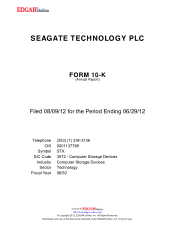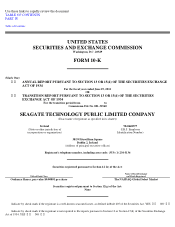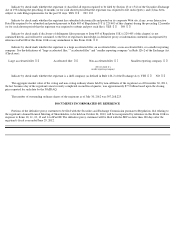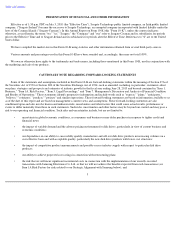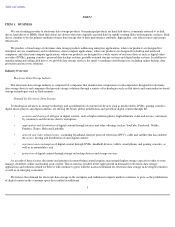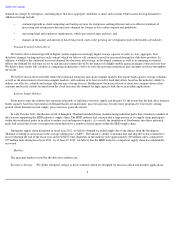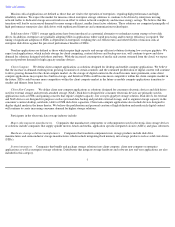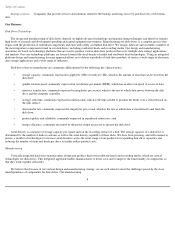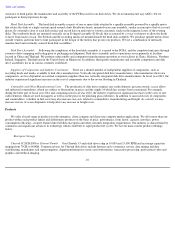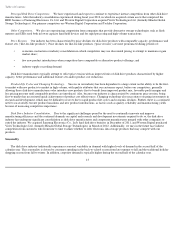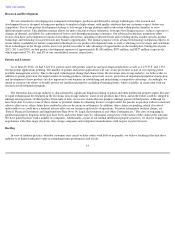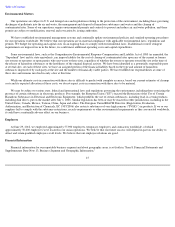Seagate 2011 Annual Report Download - page 9
Download and view the complete annual report
Please find page 9 of the 2011 Seagate annual report below. You can navigate through the pages in the report by either clicking on the pages listed below, or by using the keyword search tool below to find specific information within the annual report.
Table of Contents
demand for storage by enterprises, including those that host, aggregate, distribute or share such content. Other factors driving demand for
additional storage include:
•
continued growth in cloud computing and backup services for enterprises seeking efficient and cost
-
effective methods of
processing and storing mass data increases demand for storage as data centers expand and proliferate;
• increasing legal and regulatory requirements, which necessitate larger archives; and
•
changes in the nature and amount of data being stored, such as the growing use of digital records in the health care industry.
Demand Trends for Disk Drives
We believe that continued growth in digital content requires increasingly higher storage capacity in order to store, aggregate, host,
distribute, manage, backup and use such content, which we believe will continue to result in increased demand for disk drive products. In
addition, we believe the continued increased demand for electronic data storage, in developed countries as well as in emerging economies,
reflects the demand for real-time access to rich data and content driven by the impact of a highly mobile and increasingly connected user base.
We believe these trends will continue as computing architectures evolve to serve the growing commercial and consumer user base throughout
the world.
We believe that in the foreseeable future the traditional enterprise and client compute markets that require high capacity storage solutions,
as well as the data intensive client non-compute markets, will continue to be best served by hard disk drives based on the industry's ability to
deliver cost effective, reliable and energy efficient mass storage devices. Furthermore, the increased use of client non-compute devices that
consume media rich content streamed from the cloud increases the demand for high capacity disk drives in nearline applications.
Industry Supply Balance
From time to time the industry has experienced periods of imbalance between supply and demand. To the extent that the disk drive industry
builds capacity based on expectations of demand that do not materialize, price erosion may become more pronounced. Conversely, during
periods where demand exceeds supply, price erosion is generally muted.
In early October 2011, floodwaters north of Bangkok, Thailand inundated many manufacturing industrial parks that contained a number of
the factories supporting the HDD industry's supply chain. The HDD industry had concentrated a large portion of its supply chain participants
within these industrial parks in an effort to reduce cost and improve logistics. As a result, the inundation of floodwaters into these industrial
parks had caused the closure or suspension of production by a number of participants within the HDD supply chain.
During the supply chain disruption in fiscal year 2012, we believe demand exceeded supply due to the impact from the flooding in
Thailand, resulting in an increase in the average selling price ("ASP"). The industry's ability to manufacture and ship drives has continued to
recover through the end of the fiscal year and we believe total shipments in the industry were approximately 600 million units, compared to
657 million units during fiscal year 2011. As of June 29, 2012, we believe that the HDD industry's component supply chain has substantially
recovered.
Markets
The principal markets served by the disk drive industry are:
Enterprise Storage. We define enterprise storage as those solutions which are designed for mission critical and nearline applications.
6

